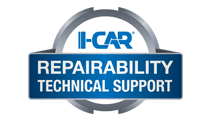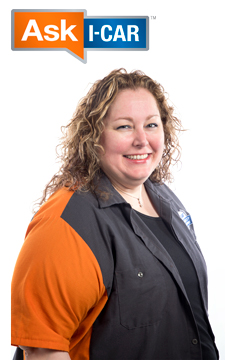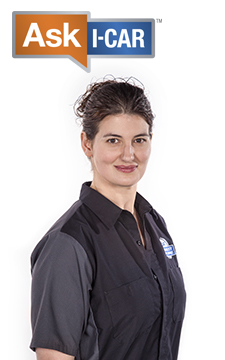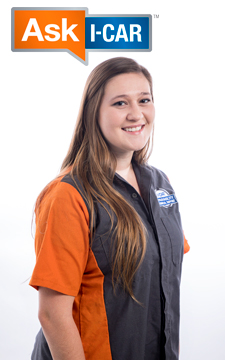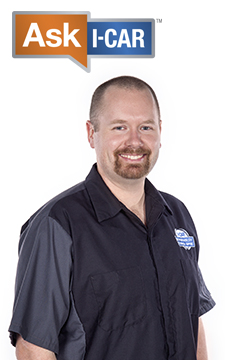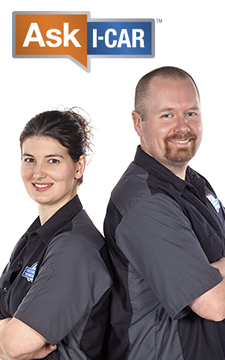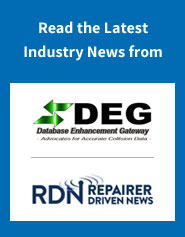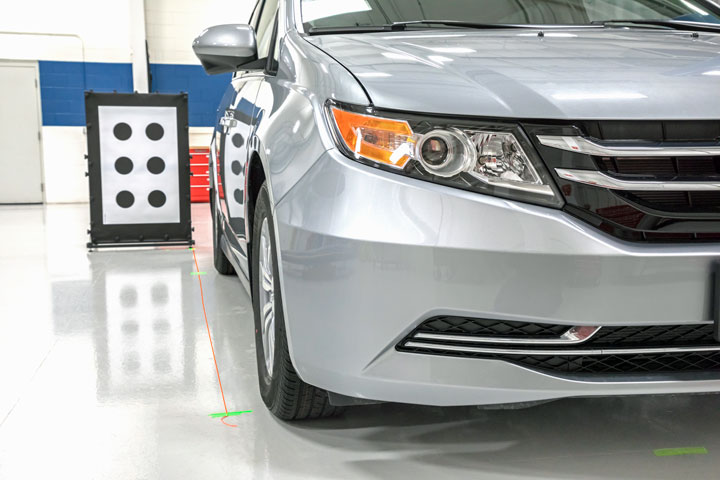
Requirements And Considerations For Achieving An Accurate Advanced Driver Assistance System (ADAS) Calibration
- Posted on 11 October 2019
It is no secret that more of today’s vehicles are equipped with at least one advanced driver assistance system (ADAS), with many of the newer models having ADAS as standard equipment. This only increases the importance of making sure accurate ADAS calibration is performed after a collision.
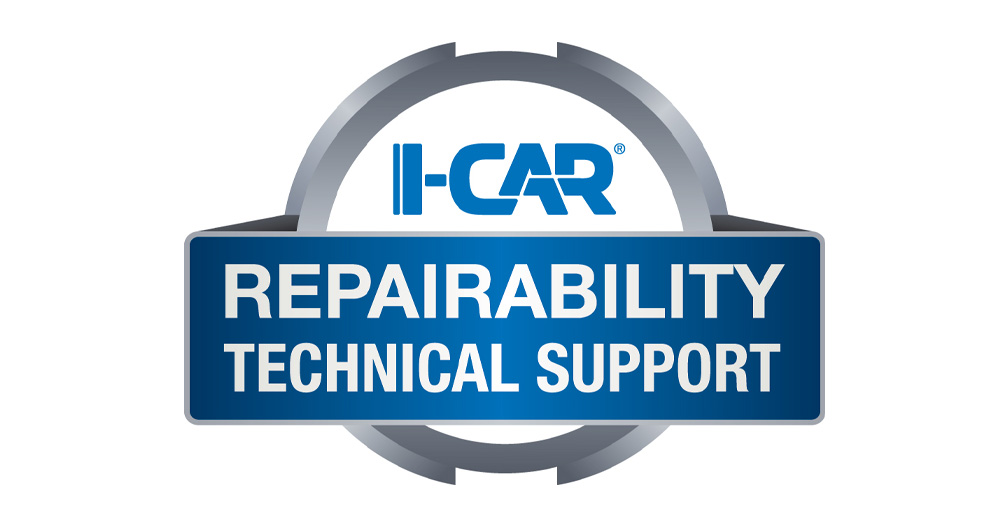
ADAS Courses Added To The Calibration Hotspot Article
- Posted on 09 October 2019
As you may know, there are many advanced driver assistance systems (ADAS) that need calibration/programming during or after the repair process. This is why it is important to learn about these different systems, where they are often located, and how they work. The RTS team had complied list of articles proven to be helpful when dealing with ADAS, calibration, and scanning.
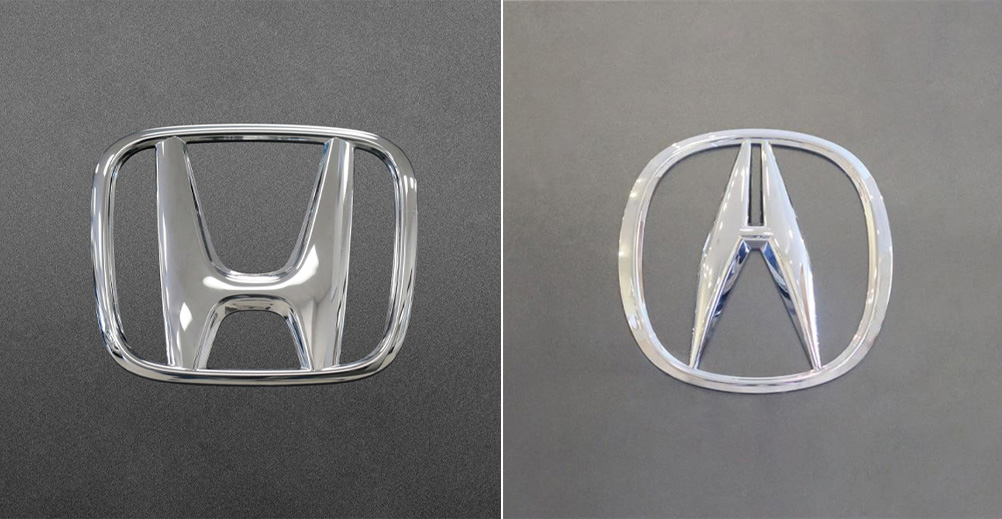
Honda/Acura: Body Repair Manual Welding & Sectioning Guideline Revisions - UPDATE
- Posted on 08 October 2019
Honda/Acura has published updated Body Repair News bulletins on welding and sectioning.
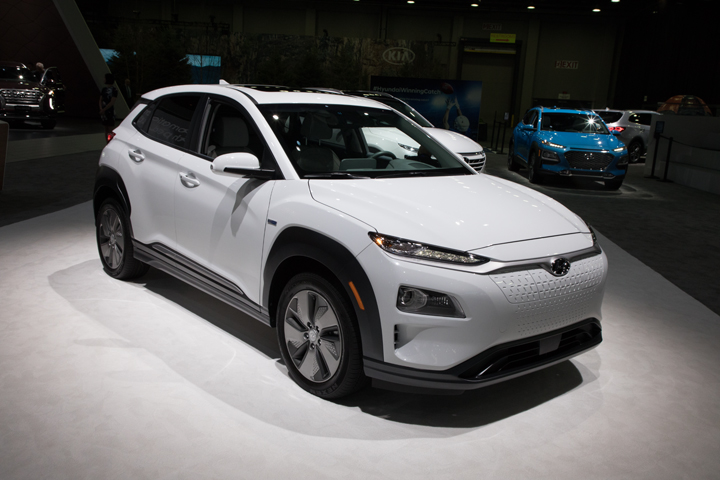
Advanced Driver Assistance Systems: 2019 Hyundai Kona
- Posted on 07 October 2019
While many have noticed that advanced driver assistance systems (ADAS) are showing up on vehicles, there still is confusion on what is required of these systems after a collision occurs. The Ask I-CAR team frequently gets questions in regard to calibration of ADAS. Many of these questions can be answered simply by using the OEM Calibration Requirements Search. However, there are some questions that may need more details than the calibration search provides. Let’s take a look at the 2019 Hyundai Kona ADAS.
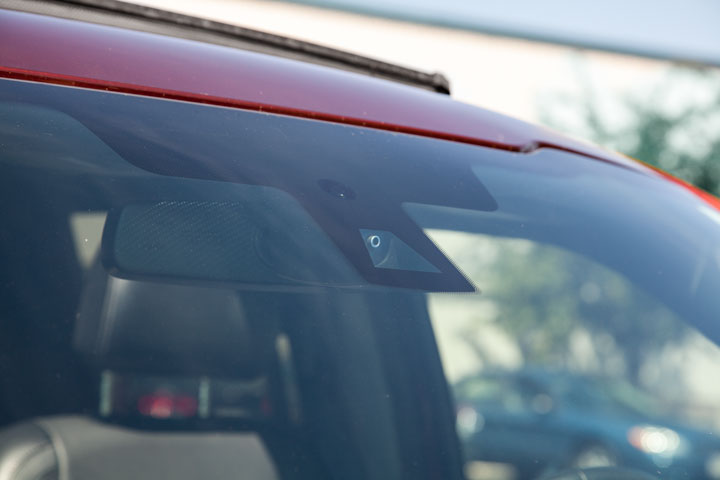
Ford/Lincoln Fixed Glass Replacement With Adhesive Moldings
- Posted on 07 October 2019
Ford recently updated the information on their fixed glass procedures in regard to fixed glass with adhesive moldings.
Previously, the Ford On Target: 2019 Volume 2 stated that any stationary glass with adhesive moldings must be discarded, and a new glass installed. Ford has revised the Ford On Target 2019: Volume 2 with new information on replacing fixed glass with adhesive moldings. It now states:

Diagnostic Trouble Codes (DTCs): Don't Just Clear Codes
- Posted on 04 October 2019
As collision repair technicians, our expertise is not typically scanning and diagnostics related. However, the influx of technology, electrical components, and sensors into vehicles will require technicians to acquire a basic knowledge of scanning and diagnostics. A lot of information is provided from a scan tool, but what do we do with this information?
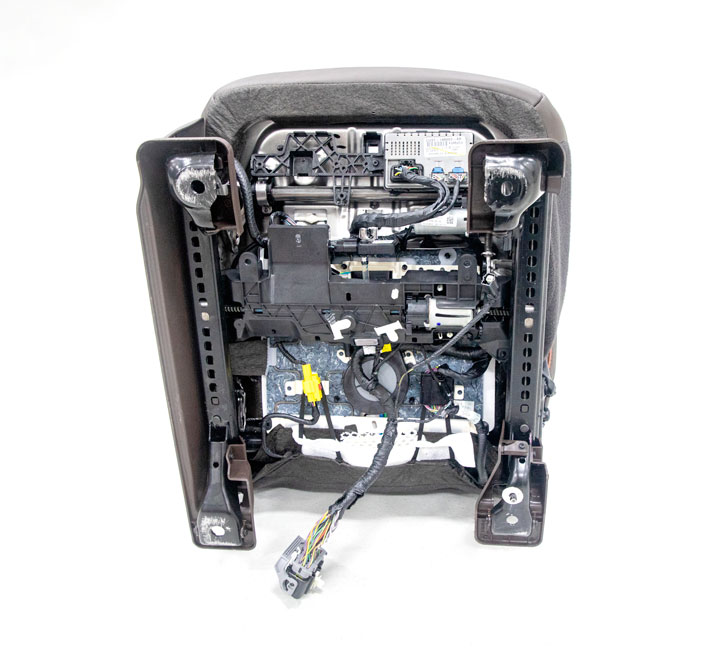
What’s In A Seat: Haptic Feedback
- Posted on 03 October 2019
As vehicles are becoming more advanced, we are finding technology where it never was before. Sometimes it is in plain sight, such as infotainment systems, GPS, and head-up display. However, sometimes it is concealed in places one may not expect.
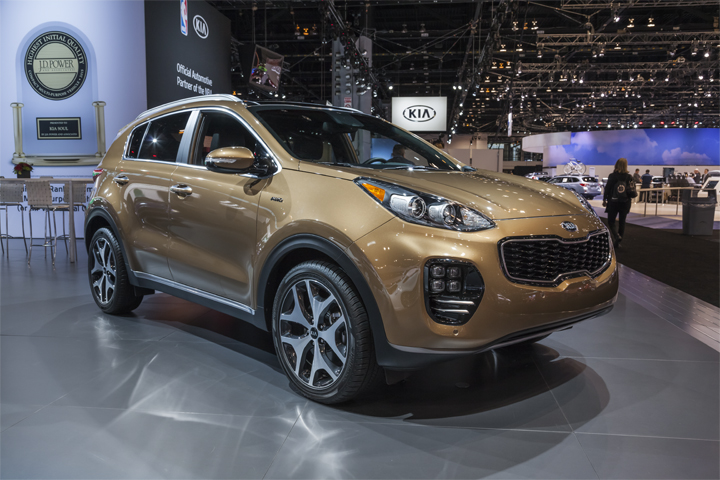
Advanced Driver Assistance Systems: 2019 Kia Sportage
- Posted on 02 October 2019
While many have noticed that advanced driver assistance systems (ADAS) are showing up on vehicles, there still is confusion on what is required of these systems after a collision occurs. The Ask I-CAR team frequently gets questions in regard to calibration of ADAS. Many of these questions can be answered simply by searching the OEM Calibration Requirements Search. However, there are some questions that may need more details than the calibration search provides. Let’s take a look at the 2019 Kia Sportage ADAS.
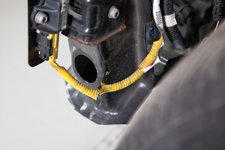
Back-To-Basics: Broken Wires
- Posted on 01 October 2019
Sometimes, going back to the basics can make the difference between a quality repair and a failed repair. Thousands of feet of wire is used in modern vehicles. Driven by consumer demand for more tech features, along with the incorporation of advanced driver assistance systems (ADAS), we won’t likely be turning back on the amount of wire used. With all of that wire, some organization is needed to keep things straight. Wires headed to the same destinations are bundled into wire harnesses. While this is great for keeping all these wires under control, it can make it difficult to find an electrical problem after a collision.
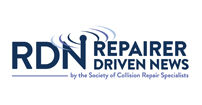
Repairer Driven News: 2020 Honda CR-V
- Posted on 30 September 2019
Repairer Driven News (RDN) released an article on the changes to the 2020 CR-V. The Honda CR-V now comes standard with Honda Sensing for all trim packages.

Repairer Driven News: 2020 Land Rover Defender
- Posted on 27 September 2019
Repairer driven news (RDN) released an article on the changes to the 2020 Land Rover Defender. This Defender is no longer a body over frame design. In fact, the structure of this vehicle is unlike any other Land Rover model with its own new platform. The “purpose-engineered” D7x platform was built to be the stiffest structure Land Rover has ever made. The body of this vehicle is aluminum intensive and lightweight.
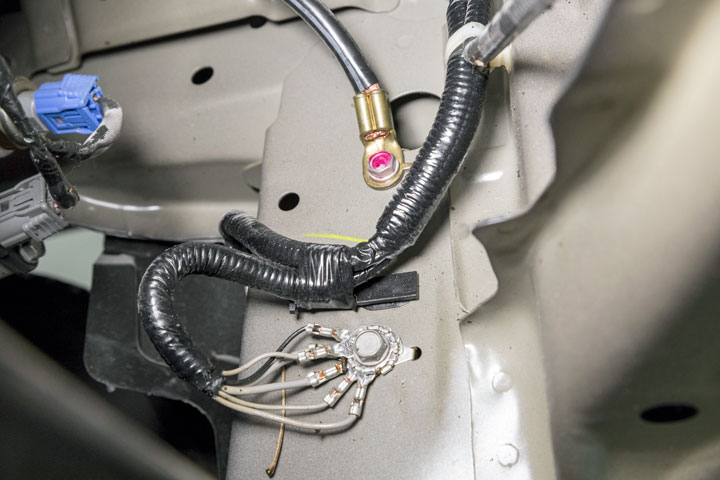
Back-To-Basics: Painted Grounds
- Posted on 26 September 2019
Sometimes, going back to the basics can make the difference between a quality repair and a failed repair. Electrical circuits are nothing new in the collision industry. Vehicle circuits primarily use 12 V direct current (DC) for electricity, which requires every circuit to have a good ground in order to be closed. The more advanced vehicle electrical systems become, the more need there is for additional grounds.

OEM Linking Pin: Refinishing Park Assist Sensors - FCA/Stellantis
- Posted on 25 September 2019
As part of the I-CAR Repairability Technical Support (RTS) OEM linking pin activity, we are helping to connect the collision repair industry to the vehicle makers. Recently we had a technical inquiry that asked if FCA/Stellantis allows park assist sensors to be refinished.
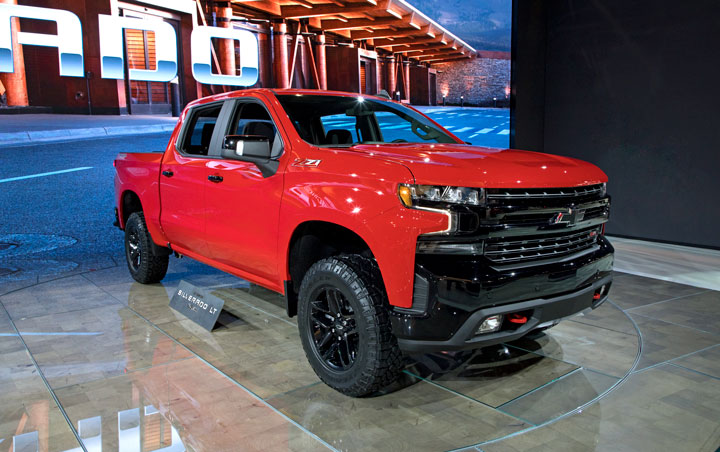
Advanced Driver Assistance Systems: 2019 Chevrolet Silverado
- Posted on 24 September 2019
While many have noticed that advanced driver assistance systems (ADAS) are showing up on vehicles, there still is confusion on what is required of these systems after a collision occurs. The Ask I-CAR team frequently gets questions in regard to calibration of ADAS. Many of these questions can be answered simply by searching the OEM Calibration Requirements Search. However, there are some questions that may need more detail than the calibration search provides. Let’s take a look at the 2019 Chevrolet Silverado ADAS.
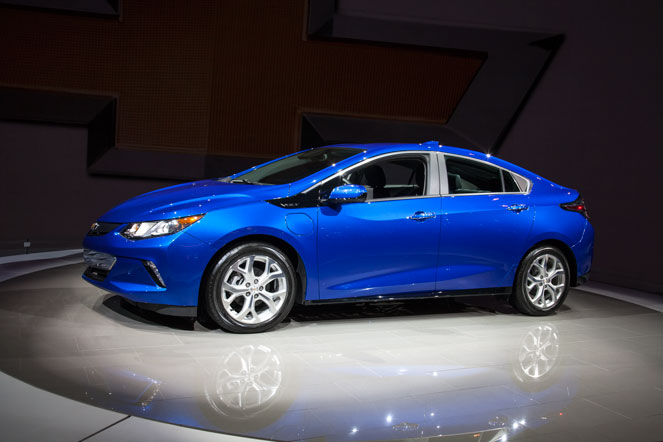
Hybrid And Electric Vehicle Precautions: 2019 Chevrolet Volt
- Posted on 23 September 2019
There are many precautions and instructions to follow while repairing hybrid and electric vehicles. To help you find this information, RTS has an OEM Hybrid And Electric Vehicle Disable Search page. Here you will find step-by-step instructions on how to find the disable procedure in the service manual. You will also find precautions for welding, refinishing, and if a scan tool and DVOM are required for disabling. Let’s take a look at the 2019 Chevrolet Volt.
-
Toyota/Lexus/Scion Position Statement: Pre- and Post-Repair System Scanning
Thursday, 28 July 2016
As the industry continues to ask if pre- and post-repair system scanning is necessary, Toyota/Lexus/Scion provides their answer.
-
Pre- and Post-Repair System Scanning Statements
Wednesday, 9 January 2019
Are you wondering if a particular OEM or organization has a published statement on pre-repair and post-repair scanning? We have compiled a list of most of the statements on the subject, so you can...
-
ADAS, Calibration, And Scanning Article Hotspot
Monday, 14 January 2019
Since advanced driver assistance systems (ADAS), scanning, and calibration first started becoming relevant, members of the collision repair industry have required as much knowledge as possible on...
-
Honda/Acura Position Statement: Pre- and Post-Repair System Scanning - UPDATE
Wednesday, 22 May 2019
Honda /Acura has updated their position statement on pre- and post-repair scanning to give more clarification on what is expected for scanning.
-
BMW Position Statement: Pre- and Post-Repair System Scanning - UPDATE
Friday, 10 April 2020
BMW has released a position statement related to pre- and post-repair system scanning. The statement applies to All vehicles equipped with on board diagnostics II (OBD II).
-
Quickly Identifying Outer Quarter Panels w/Rolled Hem Flanges
Monday, 5 March 2018
The I-CAR best practice article, Recycled Outer Quarter Panels w/Rolled Hem Flanges has gotten a lot of interest from the collision repair industry. It’s important to know which vehicles are...
-
General Motors Position Statement: Pre- and Post-Repair System Scanning
Friday, 21 October 2016
As the industry continues to ask, are pre- and post-repair scans necessary, General Motors provides their answer.
-
Restraints Wiring Repairs
Monday, 23 May 2016
Over the past few months, we've been sharing OEM position statements on restraints wiring repairs. Now we're bringing them all together in one place for easy reference.
-
FCA/Stellantis Position Statement: Pre- and Post-Repair System Scanning
Thursday, 9 June 2016
FCA/Stellantis has released a position statement related to pre- and post-repair system scanning.
-
Nissan/INFINITI Position Statement: Pre- and Post-Repair System Scanning - UPDATE
Monday, 14 January 2019
Nissan/INFINITI updated their position statement on pre- and post-repair scanning. The revised position statement touches on more subjects and gives additional information on the subject.
-
Repairer Driven News: Rivian Updates Door Handle Procedure
Sunday, 4 February 2035
Repairer Driven News (RDN) released an article featuring an updated Rivian procedure.
-
GM Part Replacement Without A Procedure
Friday, 22 August 2025
We are often asked, “What do I do if there isn’t a procedure to replace a service part?” Let’s see what GM says.
-
App-Based Connected Services Considerations: Ford/Lincoln
Tuesday, 19 August 2025
Have you had the experience where the vehicle notified the owner that it was being moved while it was in your repair facility? App-based connected services are available from many vehicle makers and may...
-
Digital Key Considerations: Ford/Lincoln
Tuesday, 19 August 2025
The intermingling of technology and automobiles continues, with digital key offerings from most vehicle makers. Digital keys utilize smartphone technology to expand vehicle access and owner...
-
Volkswagen Restraints Wiring - UPDATE
Thursday, 14 August 2025
The question is often asked, "Can supplemental restraints system wiring be repaired?" The answer is: it depends on the vehicle maker. Let's take a look at Volkswagen's position on this subject.
-
Jaguar Land Rover Restraints Wiring - UPDATE
Thursday, 14 August 2025
The question is often asked, "Can supplemental restraints system wiring be repaired?" The answer is: it depends on the vehicle maker. Let's take a look at Jaguar Land Rover's position on this subject.
-
I-CAR Repairers Realm: GMA Welding Machine Technology, Setup, And Maintenance - Coming Soon
Wednesday, 13 August 2025
I-CAR is having a discussion on GMA Welding Machine Technology, Setup, And Maintenance.
-
Great Designs In Steel 2025 Presentations: A Closer Look At The VW ID.Buzz Body-In-White Construction
Friday, 8 August 2025
In case you missed it, Eike Schuppert presented the VW ID.Buzz Body-In-White Construction at Great Designs in Steel 2025.
-
Backup Battery And Low-Voltage Disconnect
Wednesday, 6 August 2025
When an accident happens, how will you call for help? Maybe the telematics system, equipped with a backup battery, could automatically do this, even if the main power is cut off. What are the repair...
-
Backup Battery And Low Voltage Disconnect: Kia
Wednesday, 6 August 2025
When an accident happens, how will you call for help? Maybe the telematics system, equipped with a backup battery, could automatically do this, even if the main power is cut off. What are the repair...
- 2025
- August 2025 (10)
- July 2025 (11)
- June 2025 (11)
- May 2025 (11)
- April 2025 (13)
- March 2025 (11)
- February 2025 (11)
- January 2025 (12)
- 2024
- December 2024 (8)
- November 2024 (11)
- October 2024 (13)
- September 2024 (10)
- August 2024 (12)
- July 2024 (11)
- June 2024 (9)
- May 2024 (13)
- April 2024 (12)
- March 2024 (12)
- February 2024 (12)
- January 2024 (10)
- 2023
- December 2023 (8)
- November 2023 (12)
- October 2023 (11)
- September 2023 (11)
- August 2023 (12)
- July 2023 (9)
- June 2023 (11)
- May 2023 (12)
- April 2023 (11)
- March 2023 (12)
- February 2023 (10)
- January 2023 (11)
- 2022
- December 2022 (11)
- November 2022 (12)
- October 2022 (11)
- September 2022 (13)
- August 2022 (11)
- July 2022 (10)
- June 2022 (13)
- May 2022 (11)
- April 2022 (12)
- March 2022 (10)
- February 2022 (11)
- January 2022 (13)
- 2021
- December 2021 (13)
- November 2021 (11)
- October 2021 (13)
- September 2021 (14)
- August 2021 (12)
- July 2021 (15)
- June 2021 (17)
- May 2021 (14)
- April 2021 (14)
- March 2021 (20)
- February 2021 (14)
- January 2021 (14)
- 2020
- December 2020 (13)
- November 2020 (17)
- October 2020 (12)
- September 2020 (14)
- August 2020 (11)
- July 2020 (18)
- June 2020 (16)
- May 2020 (14)
- April 2020 (20)
- March 2020 (12)
- February 2020 (13)
- January 2020 (14)
- 2019
- December 2019 (13)
- November 2019 (19)
- October 2019 (25)
- September 2019 (20)
- August 2019 (22)
- July 2019 (23)
- June 2019 (20)
- May 2019 (19)
- April 2019 (20)
- March 2019 (20)
- February 2019 (18)
- January 2019 (18)
- 2018
- December 2018 (19)
- November 2018 (19)
- October 2018 (17)
- September 2018 (16)
- August 2018 (21)
- July 2018 (20)
- June 2018 (21)
- May 2018 (17)
- April 2018 (19)
- March 2018 (21)
- February 2018 (15)
- January 2018 (20)
- 2017
- December 2017 (13)
- November 2017 (15)
- October 2017 (19)
- September 2017 (20)
- August 2017 (20)
- July 2017 (18)
- June 2017 (19)
- May 2017 (19)
- April 2017 (13)
- March 2017 (18)
- February 2017 (10)
- January 2017 (11)
- 2016
- December 2016 (9)
- November 2016 (14)
- October 2016 (21)
- September 2016 (10)
- August 2016 (11)
- July 2016 (8)
- June 2016 (10)
- May 2016 (6)
- April 2016 (11)
- March 2016 (12)
- February 2016 (11)
- January 2016 (8)
- 2015
- December 2015 (9)
- November 2015 (7)
- October 2015 (8)
- September 2015 (7)
- August 2015 (11)
- July 2015 (7)
- June 2015 (5)
- May 2015 (7)
- April 2015 (8)
- March 2015 (8)
- February 2015 (9)
- January 2015 (10)
- 2014
- December 2014 (12)
- November 2014 (7)
- October 2014 (11)
- September 2014 (10)
- August 2014 (9)
- July 2014 (12)
- June 2014 (9)
- May 2014 (12)
- April 2014 (9)
- March 2014 (6)
- February 2014 (1)
- January 2014 (26)
